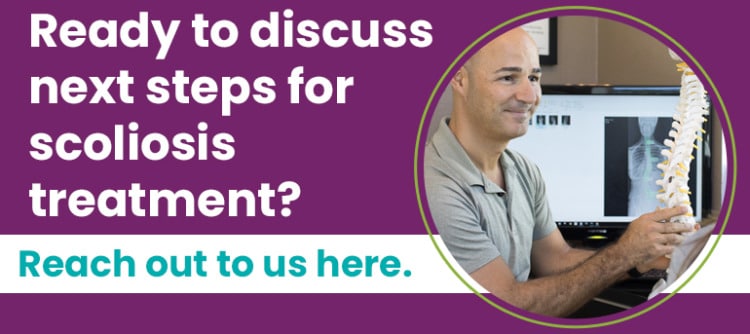Bad Posture and Chest Pain: What’s the Connection?
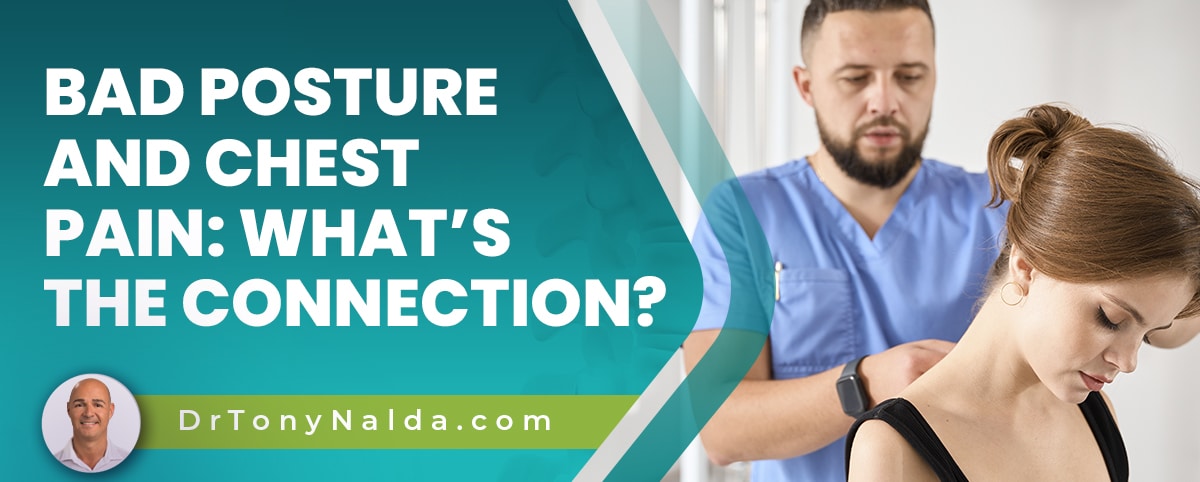
The connection between bad posture and chest pain is that it can mean exposing the chest to uneven pressure and compression; this can cause muscle tension, rib pain and/or chest pain, particularly if the poor posture means less space for the lungs to function optimally within.
The body's design is based on symmetry, so anything that disrupts its overall symmetry can be problematic. Chronic poor posture can introduce adverse spinal tension to the spine and/or a muscular imbalance, and a noticeable slump can cause chest pain by affecting the ribs and lungs.
Let's start by discussing the importance of good posture.
Table of Contents
Why is Posture so Important?
At one point or another, we've likely all been told to stand up straighter and hold the shoulders back for better posture.
Posture refers to the body's position, how it's being held and taking up space. Posture is always important, both during periods of movement and stasis.
How the body is held impacts the position of the spine, and this affects the nerves and muscles that surround the spine, and as the spine and brain work together as the central nervous system, the spine's position and health are crucial for quality of life.
If the body is held in a straight and neutral position with the spine aligned as it was designed, there is no extra pressure on any one section, and the body's weight can be evenly distributed throughout the spine and body.
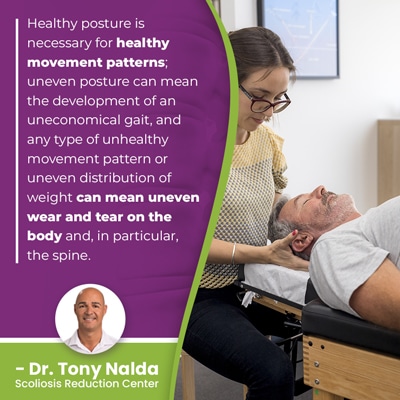 Healthy posture is necessary for healthy movement patterns; uneven posture can mean the development of an uneconomical gait, and any type of unhealthy movement pattern or uneven distribution of weight can mean uneven wear and tear on the body and, in particular, the spine.
Healthy posture is necessary for healthy movement patterns; uneven posture can mean the development of an uneconomical gait, and any type of unhealthy movement pattern or uneven distribution of weight can mean uneven wear and tear on the body and, in particular, the spine.
Healthy posture is also important for appearance; good posture means symmetry, which is more natural and pleasing to the eye.
So now that we've talked generally about the role of posture, let's apply it to the topic of pain.
Posture and Chest Pain
So healthy posture means the spine is held in a straight and neutral position with the upper body's weight evenly distributed over the pelvis and lower body.
Healthy posture also means symmetry so the body is more balanced, stable, and has healthy movement patterns.
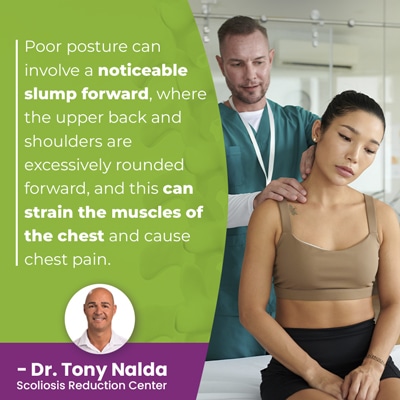 Poor posture can involve a noticeable slump forward, where the upper back and shoulders are excessively rounded forward, and this can strain the muscles of the chest and cause chest pain.
Poor posture can involve a noticeable slump forward, where the upper back and shoulders are excessively rounded forward, and this can strain the muscles of the chest and cause chest pain.
In particular, the muscles that sit between the ribs, the intercostals, can become sore, tight, and painful, and poor posture can also contribute to the development of a muscular imbalance.
Chronic poor posture can cause muscles in the back, chest, and neck to become unbalanced, with some becoming short and tightened from strain and overuse, while others are lengthened and weakened due to lack of use: capable of causing painful muscle tension and spasms.
Chest pain can also be caused by a pinched nerve around the thoracic spine (middle/upper back); if the chest area is experiencing postural issues, it's not just the spine and its surrounding muscles that can be affected, but also the spine's surrounding nerves, and a pinched nerve can be painful.
Rib Pain
Rib pain can also be caused by poor posture as the uneven forces can put pressure on the ribs, potentially causing a change in one side of the rib cage's position, causing the ribs to shift out of alignment, and this can cause tissue and nerve compression.
If the position of the rib cage is disrupted and/or one side protrudes more than the other, this can also affect lung capacity and cause respiratory issues.
Respiratory Issues
The lungs need space to function optimally within, to fully inhale and exhale.
People with a hunched posture can experience chest tightness, chest pain, neck pain, forward head posture, and reduced lung capacity.
If the position of the rib cage is disrupted, the lungs can experience compression, making it difficult to take a deep breath.
So as you can see, poor posture habits can cause chest pain in a number of ways from muscle imbalances to muscle strain, nerve pain and shallow breathing.
There are also a number of spinal conditions known to cause postural changes and related chest pain.
Scoliosis, Posture, and Chest Pain
Any condition capable of causing postural changes can cause varying levels of pain, particularly with a certain degree of nerve involvement.
Scoliosis causes the development of an unnatural spinal curve that bends to the side and rotates, and a main effect is postural deviation caused by the condition's uneven forces disrupting the body's overall symmetry.
Chest pain and respiratory issues are particularly associated with thoracic scoliosis that involves the middle/upper back, and as the only spinal section that attaches to the rib cage, it's known to cause the development of a rib cage arch, and when severe, can cause lung impairment.
Scoliosis can cause the middle/upper back to bend and twist unnaturally, and this can cause uneven shoulders, shoulder blades, a rib cage arch to develop, and uneven hips.
And as a progressive condition, the nature of scoliosis is to get worse over time, and this can mean increasing postural changes, and effects, including pain.
Scoliosis chest pain can involve the muscles being sore, strained, and unbalanced, the spine itself being structurally unbalanced, increasing spinal rigidity that occurs alongside progression, and/or radiating pain caused by compression.
Chest discomfort caused by postural changes can range from mild and intermittent to chronic and debilitating, and if postural changes are the underlying cause of chest pain, posture correction is key.
Postural Restoration
Regardless of the cause of poor posture, in order to relieve related chest pain, the posture, as the root cause, has to be improved.
Postural restoration is possible through a variety of treatments driven by the cause of the postural changes.
If poor posture is functional and not structural, meaning not caused by a structural abnormality within the body, as is the case with scoliosis, physical therapy with lifestyle adjustments can work towards restoring healthy posture and improving the body and spine's position.
Physical therapy can involve lifestyle guidance and specific customized exercises to strengthen the core muscles and back muscles. A strong core is one that's more capable of providing the spine with support and stability, and this is a focus of scoliosis treatment: increasing spinal support to improve the spine and body's balance and stability.
Mirror image exercises can be important for improving posture as patients need to learn postural awareness for any type of sustainable improvement.
Awareness of how to hold the body and spine during activity and rest is part of leading a spine-friendly lifestyle, and when it comes to healthy posture, a healthy spine is key.
If a structural condition like scoliosis is causing the postural changes, the spine's structure also has to be impacted, and this can be worked towards through chiropractic care that can realign the spine, and core strengthening exercises/physical therapy can make a significant difference to posture and balance.
Conclusion
So what is poor posture? Poor posture means the body is not being held in a straight and neutral alignment, disrupting its balance and symmetry, and if this happens for extended periods of time, it can cause pain and discomfort.
People whose posture is noticeably slumped forward can experience chest pain caused by muscle tension, muscular imbalance, and nerve pain.
The body needs to be held in a proper alignment as this promotes even weight distribution, healthy blood flow and circulation, and healthy movement patterns.
If the upper back and shoulders have a hunched posture, this bad posture can mean the upper body's weight isn't being evenly distributed over the pelvis and lower body, causing an uneconomical gait to develop that can cause further uneven wear and tear on the spine and body.
Physical therapists can help improve posture by teaching exercises that can open up the chest, relieve muscle tension and pain, and improve lung capacity.
A physical therapist can also teach postural awareness; through making a conscious effort to realign the body and hold the shoulders back, tight muscles can be relieved by opening up the chest region.
When a spinal condition like scoliosis is causing the postural changes, the spine's alignment can be improved to restore the spine and body's balance and stability, and here at the Scoliosis Reduction Center®, customized treatment plans are conservative and proactive and address a number of spinal/postural issues.
A focus of conservative nonsurgical treatment is to identify the root cause of chest pain and design a treatment plan accordingly.
Dr. Tony Nalda
DOCTOR OF CHIROPRACTIC
After receiving an undergraduate degree in psychology and his Doctorate of Chiropractic from Life University, Dr. Nalda settled in Celebration, Florida and proceeded to build one of Central Florida’s most successful chiropractic clinics.
His experience with patients suffering from scoliosis, and the confusion and frustration they faced, led him to seek a specialty in scoliosis care. In 2006 he completed his Intensive Care Certification from CLEAR Institute, a leading scoliosis educational and certification center.
About Dr. Tony Nalda
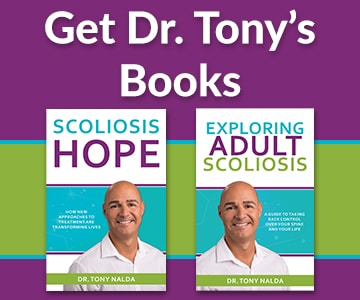 Ready to explore scoliosis treatment? Contact Us Now
Ready to explore scoliosis treatment? Contact Us Now